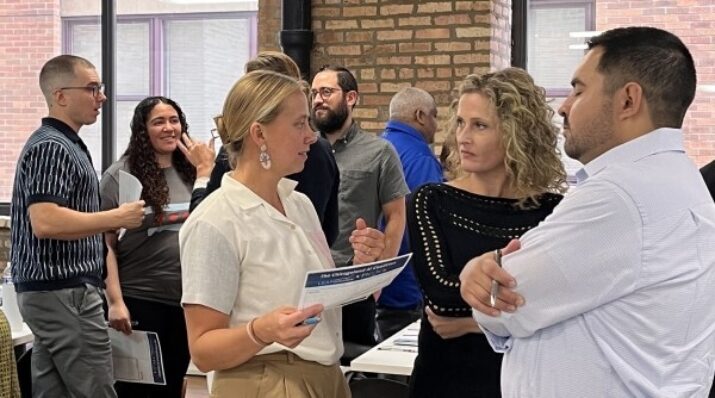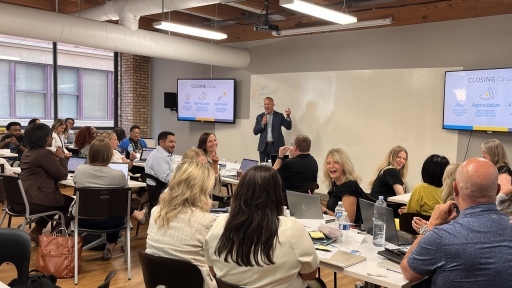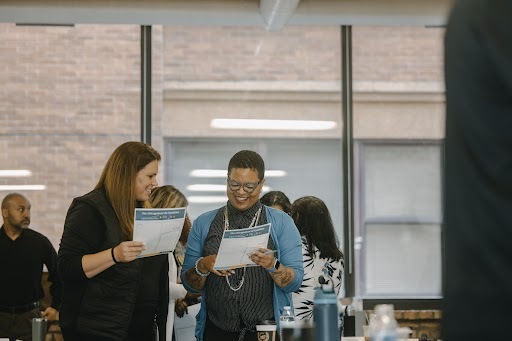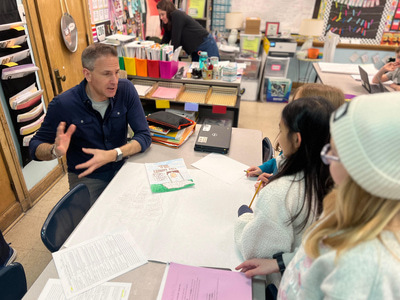Technology Tools
The Future of Learning Is Still Personal—AI Can’t Replace Relationships
Topics

Educators often take advantage of educational technologies as they make the shifts in instruction, teacher roles, and learning experiences that next gen learning requires. Technology should not lead the design of learning, but when educators use it to personalize and enrich learning, it has the potential to accelerate mastery of critical content and skills by all students.
Just like any transition to new tech and learning approaches in education, AI should be introduced through collaboration, input, support, and community engagement.
Chicago isn’t just keeping up with AI in education—we’re setting the standard for an approach rooted in what matters most—relationships. As AI reshapes the future, educators are proving that the most groundbreaking, future-ready learning is still deeply personal. Through the Chicagoland Human Centered AI Coalition, tools like Playlab and other AI tools being built into educational programs, and major investments of time and energy, we are transforming education.
The biggest misconception I’ve encountered is that generative AI is a shortcut rather than a strategic learning tool.
At LEAP Innovations, we’re equipping education leaders and teachers with the skills to use AI responsibly, ensuring it enhances—not replaces—personalized learning for all students. This fall, we convened practitioners from across the education ecosystem including teachers, school and district leaders, researchers, edtech partners, and higher ed programs to form a coalition focused on the real-world, human-centered applications of AI in our educational institutions. Together, we are considering how to meaningfully integrate AI into education while rethinking traditional teaching methods to prepare both students and educators for a rapidly evolving, tech-driven future. Many districts, networks, and systems are looking to policies or products in response to AI. At the same time, AI is constantly infused into curriculum, supplemental content, and other apps, platforms, dashboards, and sites that educators use every day. With AI overload, it is critical we prepare educators to model safe and efficient usage with their learners. While 58 percent of teachers want more training on how to effectively integrate new technologies, only one in five teachers feel adequately equipped to use the technology, with more than 7 in 10 indicating they had not received any professional development on using AI in the classroom.

From conversations with coalition members and innovators across the country, the biggest misconception I’ve encountered is that generative AI is a shortcut rather than a strategic learning tool. When generative AI first made headlines, the narrative focused on students using it to cut corners on homework or cheat. Over time, we’ve found that generative AI is only as effective as the prompts it’s given—if a student doesn’t grasp the material, they won’t receive meaningful or accurate responses. AI cannot replace learning, nor can it replace the relationships educators build with their students. It can, however, enhance learning and connections when used with intention. LEAP Innovations is working alongside educators and leaders to demystify AI technology, enhance personalized learning, and support a joyful educational experience.
Recently, an educator in our coalition and recipient of LEAP professional development shared that a student had used ChatGPT for a poetry assignment—she immediately recognized that the writing didn’t reflect the student’s voice. Rather than reprimanding, she asked the student if they had used AI and, more importantly, why they felt the need to rely on it before trying on their own. The student admitted that they didn’t think they were smart enough to write something as good as their classmates. This moment became a teaching opportunity—the educator helped the student see AI as a tool to refine their own words rather than replace them. Through their strong relationship, she was able to teach AI as a way to improve writing, paired with the necessary boost of confidence to trust their own ideas. This is the difference between AI completing an assignment and using AI to receive feedback, generate ideas, and push learners on their cognitive journey.
AI is just the tool—the real magic of learning happens through the relationships, curiosity, content, assessments, creativity, and personalized experiences that only people can bring to the classroom.
Just as students need guidance in using AI, so do educators. There must be guardrails and parameters to how learners and educators can and should engage with AI in schools. A principal in our coalition has been coaching his teachers to leverage AI for lesson planning, freeing up valuable time to focus on student-centered relationships. Instead of starting from scratch, teachers can input trusted materials, refine AI-generated ideas, and use those insights to craft engaging and rigorous lessons aligned to required standards. Effective AI integration requires clear parameters and intentional design, monitoring, feedback, and collaboration—it should support, not replace, thoughtful instruction.

Just like the transition to one-to-one devices or standards-based grading, AI must be introduced through collaboration—elevating educator and student voices; providing space to experiment and play; designing with, by, and for educators, learners, and families—to ensure that AI effectively enhances learning. LEAP’s research-based pathways offer high-touch support, guided innovation planning, and opportunities for exploration that educators need to personalize learning and leverage technology in their classrooms. Infrastructure and tools provided by partners and fellow coalition members provide safe spaces for educators to explore AI’s potential, turning it from an unknown to an asset for personalized learning.
At the end of the day, AI is just the tool—the real magic of learning happens through the relationships, curiosity, content, assessments, creativity, and personalized experiences that only people can bring to the classroom. As we embrace AI as a tool for learning, one truth remains unchanged: education is, and always will be, driven by human connection. It is the relationships between educators and students that ignite curiosity, build confidence, and shape futures.
All photos courtesy of LEAP Innovations.




